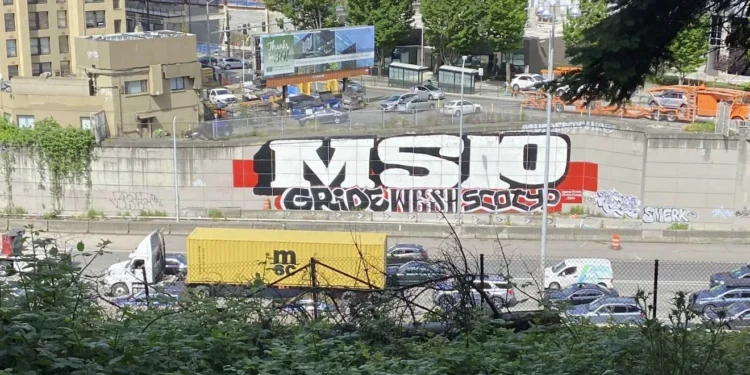City Attorney Ann Davison filed the first three civil lawsuits under Seattle’s new graffiti ordinance, targeting prolific taggers whose vandalism has caused thousands of dollars in property damage across the city.
The cases seek approximately $40,000 in combined civil penalties and restitution from three individuals identified by Seattle Police as “ALURE,” “LABRAT,” and “NOMAS.” Each defendant faces accusations of extensive tagging damage to both private and public properties throughout Seattle.
“These civil lawsuits will help hold prolific graffiti taggers accountable for the damage they do in Seattle, while we continue to prosecute taggers through the city’s criminal code,” Davison stated. She emphasized that enforcement efforts will expand beyond these initial cases.
The Graffiti Restitution Ordinance, approved by Seattle City Council in July with a 7-1 vote, imposes civil penalties up to $1,500 per graffiti violation. The current complaints involve 25 total violations, with restitution amounts designed to recover city expenses for vandalism cleanup.
Since taking effect in August, the ordinance allows retroactive enforcement for violations occurring within the previous three years, significantly expanding the city’s ability to pursue repeat offenders who have operated with relative impunity.
Seattle documented 28,816 graffiti vandalism instances in 2024, creating substantial financial burdens for small businesses and property owners. The city estimates tens of millions of dollars in annual costs to affected property owners, while municipal graffiti abatement efforts consume approximately $6 million yearly.
The new enforcement approach represents a shift from primarily criminal prosecution to include civil remedies that can recover actual cleanup costs and impose financial deterrents. Criminal cases often result in limited restitution, while civil actions can address the full scope of property damage.
The targeted individuals represent repeat offenders whose tags appear frequently across multiple neighborhoods, making them priority enforcement targets under the new ordinance. Police investigation techniques, including surveillance and tag pattern analysis, enable identification of prolific vandals.
Property owners affected by the named taggers may benefit from restitution payments if the city successfully collects penalties and cleanup costs through the civil process.
The ordinance provides Seattle additional tools to address persistent vandalism problems that have plagued business districts and residential areas, particularly in areas with high foot traffic and visibility.
Davison’s office indicated plans for additional civil cases as investigators continue identifying repeat offenders whose tagging activity meets prosecution thresholds under the new law.
The enforcement strategy combines civil penalties with ongoing criminal prosecution, creating multiple avenues for accountability while addressing both public safety concerns and property damage costs.







